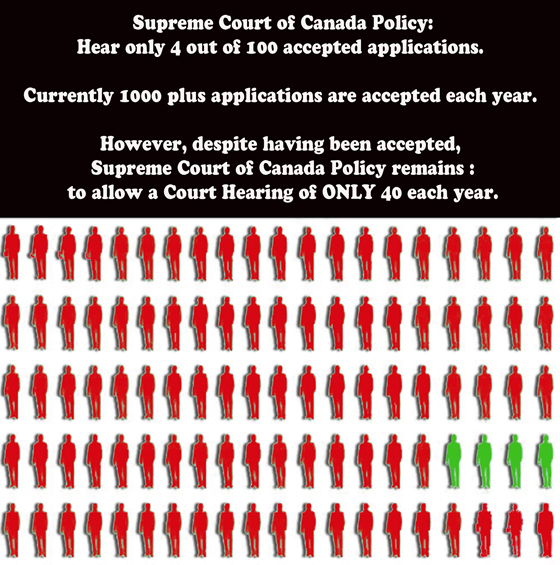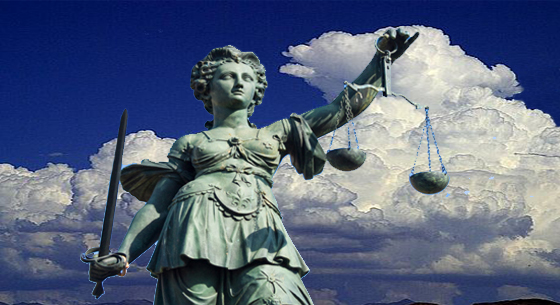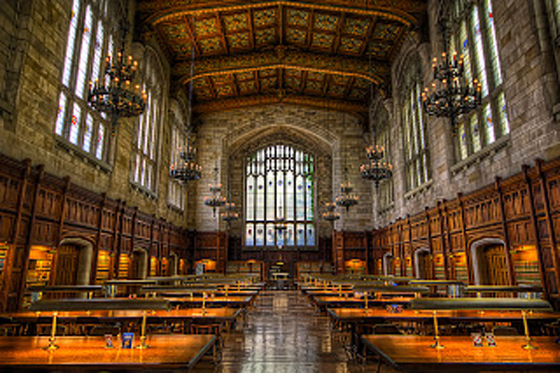The Supreme Court of Canada will accept Applications for Leave to Appeal, (Form 25A
– Notice of application for leave to appeal) when the court
believes that the case raises a question of public importance or that the matter ought to be decided by the court in the national interest. An example of this is found in the Supreme Court’s
“Checklist for
Most Commonly Filed Documents”, Memorandum of argument (Rule
25(1)(f)), “Part I – Concise overview of position with respect to issues of
public importance and statement of facts”
The opportunity of obtaining leave to appeal to
the Supreme Court of Canada does not come around too often. An article in the National
(Volume 20, No 7) addressed what we need to know before seeking leave.
The key points are noted as:
·
Different test - it is not good enough to file the factum relied on
before the Court of Appeal; you are addressing a different test - the public
importance or national interest test.
·
Reframe the Case as a Public Importance Issue – this is critical -
Supreme Court Rules were recently amended to require applicants to highlight
the public importance of the case at the outset of the written
materials. While we are encouraged to lift our sights and
put the judgment in a broader context, the difficulty may be that “public
importance” has not been defined. That said, some guidelines do exist,
such as the issue of public importance must be central to the case and not moot
or about to be dealt with by legislation.
· Pause –
you may want to reflect for a week or two, then write a couple of pages about
why the issue is one of public importance (not why the Court of Appeal erred)
and have a colleague review it.
While the main theme here is public importance, given that only about 10% of leave applications are successful, and this test seems to be the gatekeeper, it is a point worth stressing.
Please Note: The Supreme Court is also a general court of appeal for
criminal cases. In theory any citizen may come before the Supreme Court to
plead his own case, but such instances are rare.
In criminal cases the court will hear appeals if an acquittal has been set aside or if there has been a dissenting judgement in a provincial Court of Appeal on a question of law. A guilty verdict in a case of first-degree murder may automatically be appealed to the Supreme Court. If it first grants leave to appeal, the court may also hear appeals on questions of law arising from summary convictions or indictable offences.
In civil cases appeals may only be presented with the prior permission of the court; such permission is granted when the court believes that the case raises a question of public importance or an important issue of law or of mixed law and fact that ought to be decided by the court in the national interest. The DRYBONES and MURDOCHcases are 2 famous examples. The limitation on appeals was included in the 1975 modifications to the Supreme Court Act.
In criminal cases the court will hear appeals if an acquittal has been set aside or if there has been a dissenting judgement in a provincial Court of Appeal on a question of law. A guilty verdict in a case of first-degree murder may automatically be appealed to the Supreme Court. If it first grants leave to appeal, the court may also hear appeals on questions of law arising from summary convictions or indictable offences.
In civil cases appeals may only be presented with the prior permission of the court; such permission is granted when the court believes that the case raises a question of public importance or an important issue of law or of mixed law and fact that ought to be decided by the court in the national interest. The DRYBONES and MURDOCHcases are 2 famous examples. The limitation on appeals was included in the 1975 modifications to the Supreme Court Act.


























No comments:
Post a Comment